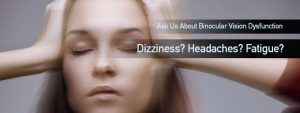Studies show that up to 15 percent of the population may be dyslexic, though less than 10 percent actually receive a formal diagnosis.
Dyslexia is a complex condition that impacts the way the brain interprets and processes information. It is one of the most common learning disabilities that affects writing, spelling and reading.
Some adults and children, who have a difficult time reading, may experience a wide range of visual issues and complain of symptoms when viewing text on a page.
The symptoms of dyslexia may include:
- Blurry or double vision
- Comprehension difficulties
- Headaches or eye strain
- Letters or words appear to move
- Reduced attention and concentration
- Seeing a glare on white paper
- Slow reading
- Tiredness or fatigue when reading
Symptoms of dyslexia can also impact the lives of adults.
If you or your child are experiencing any of these symptoms, contact an eye doctor near you so that you can alleviate your symptoms.
SEE RELATED: Children and BVD
Could your child’s symptoms be due to a vision problem?
The symptoms of dyslexia, mentioned above, are often similar to those experienced with vision problems.
For this reason, an eye exam is essential if you or your child has been diagnosed with dyslexia, or if you suspect your child has dyslexia.
A comprehensive eye exam can identify vision problems, even before formal schooling starts, and before difficulties in writing, spelling and reading begin.
Healthy vision is an important piece of the learning process. Each of the following visual functions must be carefully evaluated to detect any learning-related vision problems:
- Binocular Visual Dysfunction – including the misalignment of the two eyes
- Visual efficiency – including binocular vision (eye teaming), eye movements, and accommodation (focusing)
- Visual information processing – including discrimination and identification, integration with other senses and spatial awareness.
- Visual pathway integrity – including refractive status, visual acuity, and ocular health
Once evaluated your eye doctor can discuss the best treatment options available.
Schedule an appointment with an eye doctor near you to evaluate and recommend the best treatment options available.
Can vision therapy help with dyslexia?
Vision therapy is a highly effective way to treat vision problems whose symptoms either mimic dyslexia or coexist alongside dyslexia.
A customized vision therapy program will improve a patient’s visual efficiency and processing, and therefore strengthen many academic skills.
Vision therapy retrains the eyes and brain to connect properly through a series of eye exercises aimed at strengthening visual skills.
In some cases, vision therapy also involves the use of special lenses or prisms. Your eye doctor may recommend wearing glasses full time, or as needed for near vision activities, such as reading.
If you or your child show any signs of dyslexia, the source may be an undiagnosed vision problem.
LEARN MORE: Guide to Binocular Visual Dysfunction (BVD)
Schedule an eye exam and take the first step to improve your child’s visual skills.










